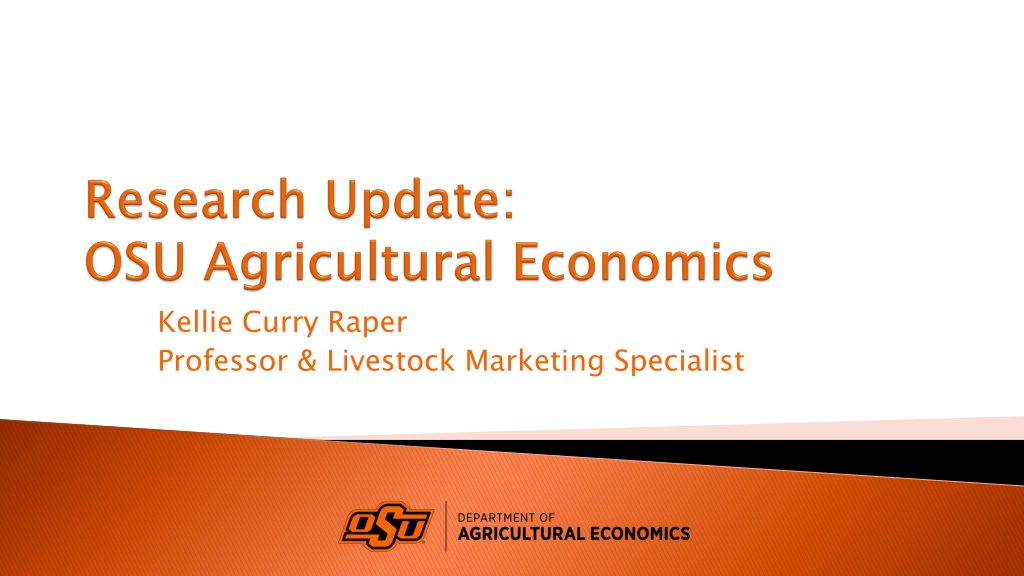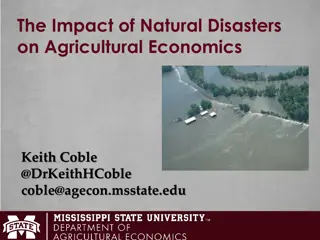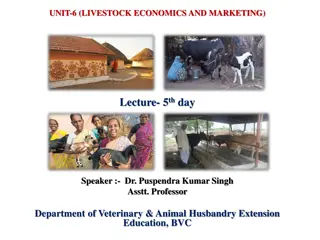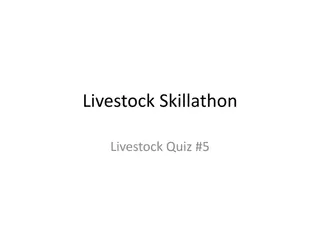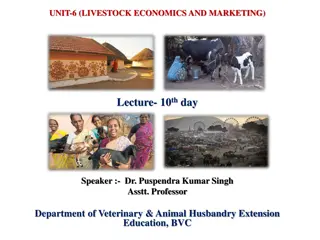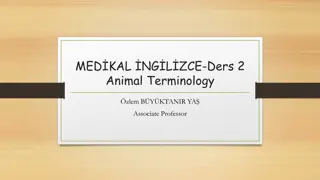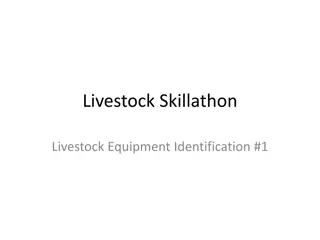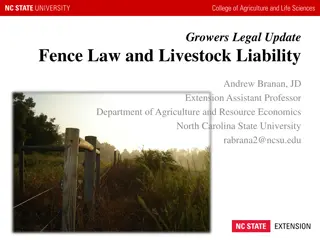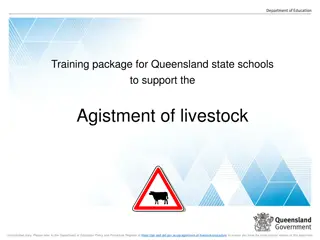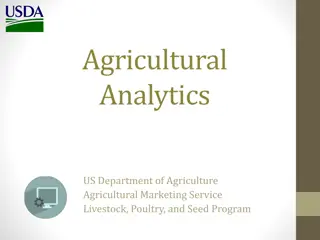Livestock Marketing and Agricultural Economics Insights
Explore the economic impacts of agricultural cooperatives and farm credit associations, along with innovative tools like the Farm Transition Simulator. Delve into the influence of broadband access, childcare availability, and emerging trends in livestock and meat production. Gain valuable insights into rural economic development, climate change impacts on farming practices, and the future of sustainable agriculture.
Download Presentation

Please find below an Image/Link to download the presentation.
The content on the website is provided AS IS for your information and personal use only. It may not be sold, licensed, or shared on other websites without obtaining consent from the author. Download presentation by click this link. If you encounter any issues during the download, it is possible that the publisher has removed the file from their server.
E N D
Presentation Transcript
Kellie Curry Raper Professor & Livestock Marketing Specialist
WHO Agricultural Cooperatives, Rural Electric Cooperatives, and Farm Credit Associations Economic Impacts $3.4 Billion Direct Economic Expenditures 4,132 jobs = $426,000 in payroll $5.5 Billion Overall Economic Impact 11,539 jobs = $1.6 Billion in labor income Farm Credit Cooperatives Alone $112 Million Economic Impact, 561 jobs, $103 Million Payroll
Farm Transition Simulator (Beta testing) Simulates cash flow sufficiency across multiple transition strategies ranging from Split it down the middle to a lifetime equity buyout Farm bill language change proposal Collaboration (OSU, TAMU) to propose Farm Bill language changes allowing broader range of entity forms without interfering with payment limits New handbooks by year end for: Solar Leasing, Battery/energy storage leasing, Carbon contracts Wind Energy Leasing 2ndEdition
Broadband Impacts Fiber broadband ~ 2%-3% in rural value Better broadband ~ New rural and urban business births (w/A. Van Leuven) Rural Hospital Services Clinics and CT/MRI scans, Delivery Rooms Small changes in service = Better financial outcomes for hospitals
Childcare Availability Rural & Urban Supply is constraining factor Community Social Capital ~ Rural job growth Banking Deserts are mostly in the actual desert Arizona, Nevada Most Americans have access within 10 miles of home
Livestock and Meat Cell Cannot compete economically with beef, pork, and chicken, even assuming phenomenal technological advances Some consumers were willing to pay more for carbon friendly rib given information that rotational grazing reduces greenhouse gas. (Kolady) Cell- -cultured meat cultured meat is destined to be a novelty product (Brorsen) carbon friendly rib- -eye steak eye steak when Crops Farmers preferences for carbon payments of no-till and cover crops in South Dakota (Kolady) Farmers more concerned with climate change are more likely to enroll in carbon market programs and demand smaller carbon payments 50 If technological change continues on pace with the past 40 years, yields will continue to go up, but not as fast as in the past. Farmers preferences for carbon payments differ between conservation practices 50- -year corn yield loss estimates year corn yield loss estimates due to climate change ~ 19% (Brorsen)
Drought Impacts in Tillman/Harmon/Jackson Counties (with Ph.D. candidate, Katie Welch) 2011-2013 $172 million was lost in the region s economy. Job loss ~ 3,699 AG disaster relief insurance reduced economic value loss by 58% and job loss by 62%. 2021/2022: Working on these estimates now
Oklahoma cattlemen are more likely to vaccinate calves for respiratory disease (76%) than the breeding herd (54%) (K. Harwell (MS), A. Hagerman, K. Raper, H. Shear, R. Biggs) Lack of disease knowledge influences breeding herd vaccination Herd size and use of other vaccines drives calf respiratory vaccination Rotational Patch-Burn Grazing vs. Traditional Burning (H. Baker (MS), H. Shear, D. Peel, K. Raper, S. Fuhlendorf) Burning 2 patches/year increases availability of quality forage Lessens drought impact Increased burn costs negated by winter feed cost savings
Impact of Days Weaned on Feeder Cattle Premiums in Oklahoma Amadeo Panyi (PhD Candidate), Kellie Curry Raper, Derrell Peel Increasing premiums ($/cwt) as weaning periods increase from 60 to 105 days Analysis of stocker producers calf purchasing preferences Mengyu Yin (PhD Graduate), Kellie Curry Raper, Derrell Peel, and Amy Hagerman ~ JARE 2023 Preferences for breed, geographic source, health management, animal type, transaction type and distance Risk-Takers, Amazon Shoppers, Risk Avoiders, and Upscale Shoppers Adverse Selection in the Cattle Procurement Market Kayla Hildebrand (PhD Graduate) and Chanjin Chung ~ JARE 2023 Private private fed cattle transaction data Examines potential selection bias in the cash fed cattle market price, suggesting that cattle sold in the cash market are assumed to be of lower quality than cattle sold through advanced marketing agreements, where carcass data alleviates information asymmetries.
The future of precision nitrogen recommendations looks to be field-level recommendations rather than variable rate recommendations (Brorsen) Should Producers of Rain fed Wheat Enroll in Agricultural Risk Coverage or Price Loss Coverage? (Ph.D. candidate, Leann Westbrook with Dr. Dayton Lambert) Yes. Stack ARC or PLC on crop insurance. Planting summer crops is recommended in addition to the above. Farm Management Resources Dr. Courtney Bir Free farm financial planning for producers Focus on beginning farmer rancher issues (part of a multi stakeholder initiative) Niche agriculture- bees, vegetables, non traditional crops/livestock
Consumers will pay more for potting mix made from Eastern Red Cedar bio char, providing a way to harvest this invasive shrub and turn it into a valuable product. Homeowners are willing to accept alternative lawns that encourage biodiversity. Bread made from different wheat varieties imparts different tastes to consumers. Used to develop a method for making flavor profiles for OSU varieties.
https://agriculture.okstate.edu/departments- programs/agecon https://agriculture.okstate.edu/departments- programs/agecon/faculty/ https://experts.okstate.edu/
